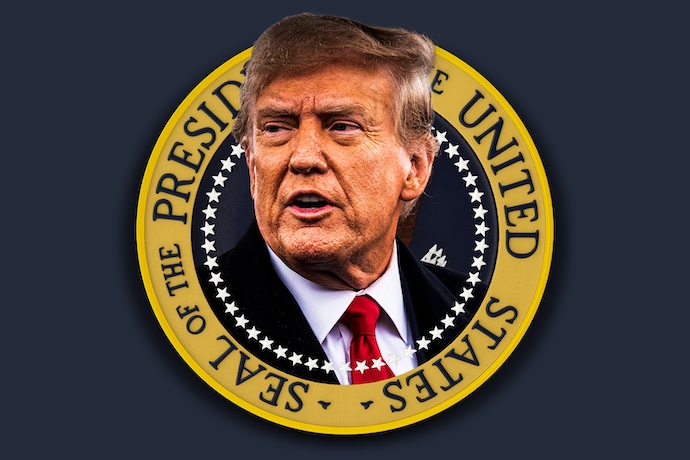
Can the United States Save Multilateralism?
The once interconnected and cohesive world is now fragmenting under the weight of renewed geopolitical tensions, rising economic protectionism, unilateral sanctions, frequent treaty violations or withdrawals, and economic coercion coupled with military actions. The multilateral system faces challenges not only from established and rising powers like Russia and China but also from its traditional leader, the United States, creating a paradoxical and unstable scenario. This has shaken the system’s normative foundations and operational capabilities.
Established after World War II to foster international cooperation, the multilateral system expanded to address economic development, global security, public health, human rights, and environmental issues. Key forums include the United Nations, the World Bank, the International Monetary Fund, the World Trade Organization, NATO, and the Organization for Economic Co-operation and Development, alongside informal groups like the G7 and the G20. Multilateralism evolved with the liberal international order, a key component of global progress.
For much of the late 20th and early 21st centuries, the United States acted as a benevolent hegemon, using soft power and military interventions to support the multilateral system and advocate for Western globalization. Following the Cold War’s end, multilateralism gained momentum, but recent decades have seen its foundations weaken, leading to a period of decline and crisis. Post-colonial reactions against Western dominance and rising populism have eroded the liberal values underpinning multilateralism. Additionally, the agenda has faced assaults from revisionist powers like China and Russia, as well as internally within the United States—blatantly during Donald Trump’s presidency and more ambiguously under Joe Biden.

Donald Trump’s aggressive America-first policy marked a departure from the traditional U.S. support for the liberal international order. His administration withdrew from the Paris climate accord, the Iran nuclear deal, and the Trans-Pacific Partnership. Despite advocating for a multilateral approach rhetorically, Joe Biden has also undermined the United Nations by supporting Israel unconditionally during the war in Gaza. Meanwhile, Russia disrupts the system through military actions, and China challenges it with parallel governance structures. The European Union, a major supporter and beneficiary of multilateralism, is internally divided and contending with rising right-wing populism.
Simultaneously, the United Nations and its agencies have lost credibility due to inefficiency, structural gridlock, and ideological conflicts. The World Trade Organization has stalled in concluding the Doha Round negotiations that began in 2001. The non-proliferation regime is threatened by the collapse of the nuclear agreement with Iran. Efforts to combat climate change have made only symbolic progress. The idea of digital governance—a borderless, decentralized society—has been undermined by mega-corporations and authoritarian governments controlling data for surveillance and repression.
Despite this bleak outlook, an optimistic narrative suggests that multilateralism is not collapsing but transforming into a form more suited to 21st-century realities. Some argue that this is not the death of multilateralism but the decline of a specific type. This raises the question: is a more dynamic form of multilateralism emerging? According to numerous analysts and practitioners, the answer is yes.
In response to the decline of traditional multilateralism, three competing perspectives have emerged among U.S. foreign policy influencers. Some advocate for a coalition of democratic nations led by the U.S. Others see multilateralism as a means to manage strategic competition among major powers. Lastly, proponents of limited multilateralism favor creating ad hoc alliances between the U.S. and capable countries.
Setting aside theoretical debates about each approach’s desirability, the crucial question is whether the U.S. has the capacity and strength to advance any of these strategies amidst global transformations. The failure of traditional U.S.-led multilateralism is exemplified by the United Nations. The feasibility of the U.S. promoting multilateralism through a coalition of liberal democracies is also doubtful. The U.S.’s credibility as a global democracy champion has been undermined by Biden’s unconditional support for Israel. Historical precedents, such as the Afghanistan withdrawal, show the U.S. has not always been a reliable partner.
Managing strategic competition with major powers like Russia and China seems impractical in today’s era of heightened rivalry and global crises. The zero-sum nature of great power relations and systemic conflicts have eroded dialogue and compromise potential. All parties seem more inclined to escalate tensions than manage them cooperatively.
The U.S. has seen some success with case-by-case alliances, such as I2U2, the chip alliance, Quad, and AUKUS. However, the effectiveness of these alliances is uncertain, especially as most member countries belong to the Western camp. Ongoing crises in Ukraine and the Middle East, along with the decline of U.S. hegemony, suggest the U.S. may struggle to form and maintain such alliances. This is evident in the recent failure to establish a naval coalition to protect shipping from Houthi attacks in the Red Sea.
Analyzing these alternative multilateralism approaches reveals a shared assumption: despite global power shifts, the U.S. retains enough influence to promote a revised form of multilateralism. However, recent assessments cast doubt on this assumption. Perhaps it is time for U.S. strategists to consider a pragmatic and inclusive model of multilateralism, where America’s role is not necessarily at the forefront.

